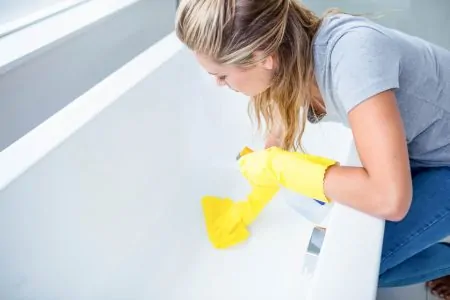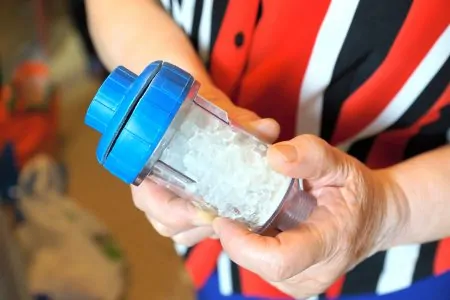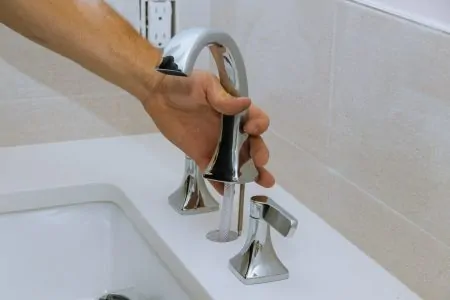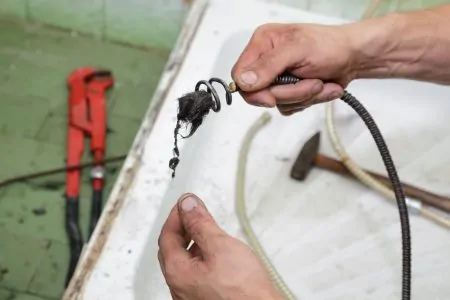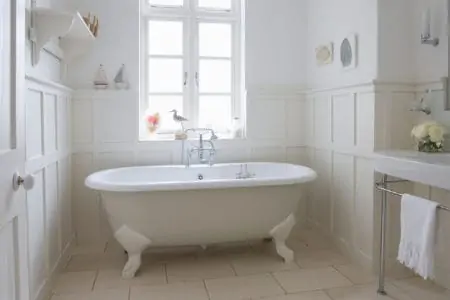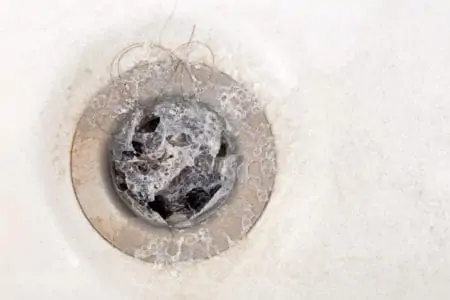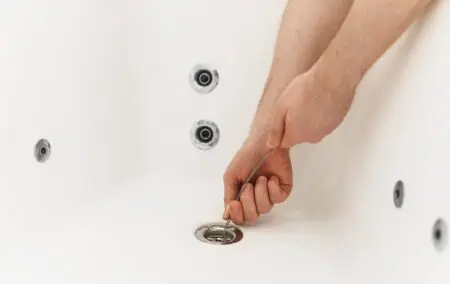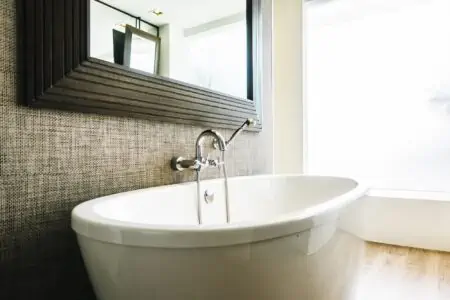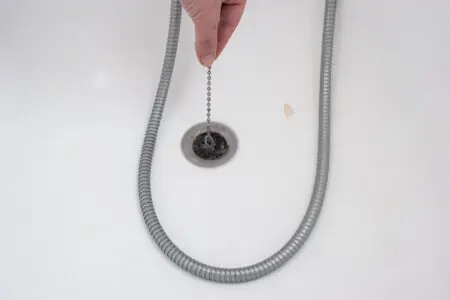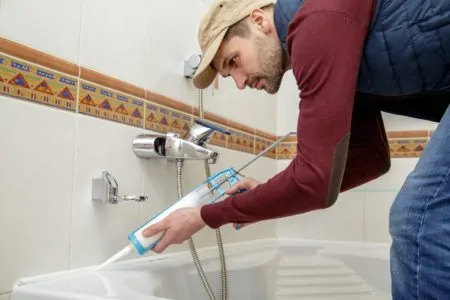Hard water stains can quickly make a new bathtub look old and unsightly. White, scaly residue around the tub is an unfortunate side effect of living in an area with hard water.
Limescale on your bathtub may be harmless but it will continue to grow if not dealt with. Fortunately, removing these marks is a straightforward process and it can be done with items that might already be in your kitchen.
In this article, we will explain how to remove hard water stains from bathtub using both natural and chemical solutions. These methods will get your bathtub looking as good as new.
Key Takeaways
- Hard water stains are caused by high mineral content like calcium and magnesium, leaving white, scaly residue on bathtubs.
- Natural acidic cleaners such as white vinegar or lemon juice can be used to effectively remove these stains.
- For stubborn stains, commercial cleaners like CLR or Viakal may be necessary, but always follow the instructions and test on a small area first.
- Prevent stains by regularly rinsing and drying your bathtub after each use, and using a weekly natural acidic cleaner spray.
What Causes Hard Water Stains on a Bathtub?
Hard water has a high mineral content, usually calcium and magnesium. When these minerals react with soap, they make the scum that you sometimes see floating in your bathwater.
Later, when you empty your bath, residual water dries and leaves behind these minerals, creating calcium buildup on your bathtub (1). If you live in an area where the water also contains ferrous iron, you might see reddish brown stains as well (2).
How to Remove Hard Water Stains from a Bathtub
Hard water is alkaline in nature (3), making it the opposite of acidic. This means acid can neutralize alkaline material, which is why acidic cleaners are highly effective against limescale and other deposits left by hard water (4).
You don’t need strong acids to get hard water stains out of a tub. In fact, you might already have acids in your kitchen that will make highly effective cleaners, such as lemon juice or white vinegar (5).
1. Clean the Area
Before attempting to clean any hard water stains, give your bathtub a quick wipe to remove any other dirt that is present. Use your usual bathroom cleaner and rinse it well once you’re finished. You should now be able to clearly see any limescale and other hard water stains left on your bathtub.
2. Ventilate Your Bathroom
Unlike chemical cleaners, vinegar isn’t dangerous, but it does have a strong smell. If it isn’t too cold outside, consider opening a window before you proceed.
3. Dilute Your Chosen Cleaner
Although white vinegar and lemon juice can both be used undiluted, try using a 50:50 mix with water first. This could be enough to loosen the mineral deposits. Applying this mix with a spray bottle will be easier but make sure you give it a good shake first to mix it thoroughly.
Lemon Alternatives
4. Soak and Let it Sit
Spray the entire area where the hard water stains are, then leave it to its work for a while. This could take anything from 15 minutes to a few hours, depending on the severity of your buildup. If there are large mineral deposits, respray the area every 20 minutes to ensure your cleaner doesn’t dry out.
Try This
5. Start Scrubbing
Once the solution has had time to dissolve or loosen the limescale, it’s time for some manual cleaning. Put on some rubber gloves if you like, though this isn’t necessary with natural cleaners. Then, grab a soft cloth or scrubbing brush. Apply a little pressure and rub away the buildup. Thanks to your acidic cleaner, it should come away relatively easily.
Good Idea
6. Rinse and Repeat (If Necessary)
Once you have scrubbed away the stains, rinse your tub with clean water. If any limescale remains, you might need to repeat the previous steps until it’s all gone.
For Stubborn Stains
If the stains on your bathtub have been there for a while, natural solutions might be ineffective. Instead, you might need to consider a commercial cleaner such as CLR or Viakal. Before applying them, check that they won’t damage the surface of your tub and read the instructions carefully to use them safely.
You can use the same paper towel method we described in the natural cleaner section to soak stains away with these cleaners. Be sure to rinse the tub thoroughly after cleaning, as chemical cleaners can damage bathtubs if left on for too long.
More Tips and Tricks
1. Steam Clean
A steam cleaner can help break down limescale. If you have one, try using it first as it could loosen the stain and make it easier to remove.
2. Clean and Dry Regularly
You can prevent stains by rinsing your tub and drying it after every use. To go further, you can spray it down with a natural acidic cleaner such as vinegar and water once per week to prevent limescale buildup.
Stains and limescale build-up are caused by hard water. Even after cleaning and rinsing, minerals will be left as any residual water evaporates. If you dry your tub after using it and rinsing it, the moisture containing those minerals is removed, significantly reducing the formation of limescale.
3. Don’t Mix Cleaners
Never mix any cleaning products. The fumes created by these reactions can be toxic, burning skin and eyes, and potentially causing life threatening damage to your lungs (6).
FAQs
Time to Shine
The last thing anyone wants to do after a relaxing bath is clean their bathroom. Still, taking a couple of minutes to rinse and dry your bathtub will help you avoid a tougher battle with limescale and hard water stains in future.
Consider using a home solution such as white vinegar or lemon juice before resorting to chemicals. Chemical cleaners are highly effective but you run the risk of damaging your bathtub’s finish if they are left on for too long, which won’t be the case with a natural cleaner.
Modern bathtubs are designed to be durable and easy to wipe clean, so getting into the habit of a quick clean after each use will ensure your tub looks pristine for many years to come.
